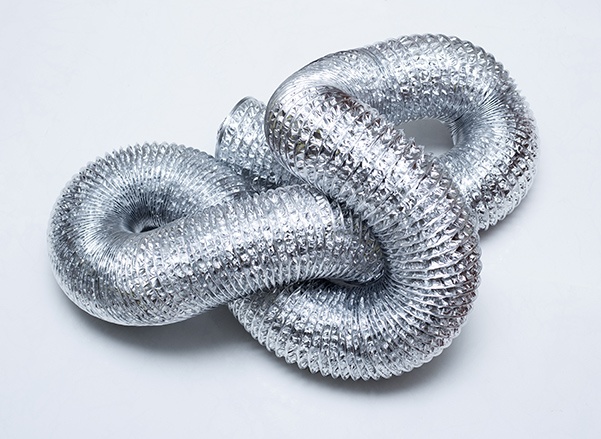


Author:
Revised:
June 29th, 2020
Your air conditioner, much like a car, is a significant investment. It’s natural to worry about not just its long-term performance but also how it looks. When possible, most people keep their car in a garage to protect against the wear and tear of the elements, they’ll wash and wax the car, and will try to prevent deterioration in other ways.
So, should you be worried about the same when it comes to your air conditioner?
There are several myths when it comes to air conditioner appearance and maintenance, and we want you to be aware of those. But there are also times when you’ll want to know what to do (or avoid) to maintain not just the appearance of your air conditioning system, but also its performance and efficiency.
What Causes Your A/C System to Look Bad?
The outdoor unit of any air conditioner is going to be exposed to the elements. This is simply a fact of how they function, pulling warm air from the home and releasing it outside.
The good news is, regular sun, wind, and rain isn’t going to affect performance except in extreme cases where there is additional physical damage to the unit. Air conditioners are built with these conditions in mind, and are tested to ensure that they perform well in a variety of weather conditions.
Some materials are more resistant to rust than others, and this often varies based on brand or model. A good HVAC contractor can walk you through various options if this remains a concern for you. But even a unit that begins to rust outwardly can continue to perform efficiently for years to come.
While rust and corrosion from the elements might be the most obvious, it’s not the only way the appearance of your system can suffer. Several others can indeed affect performance, which we’ll talk about shortly.
What About Indoor Units?
Comparatively speaking, indoor units are going to be less subjected to wear and tear which could result in it looking worse.
Occasionally, though, you’ll see symptoms of underlying maintenance issues, which will manifest as aesthetic issues. For example, a leak in your system’s flue pipe can create moisture buildup. This, in turn, can create corrosion both within the flue as well as on top of the indoor unit if it is leaking.
The same goes for a coil leak, where you will start to see acid corrosion as a result of the leak.
These are maintenance issues, not strictly aesthetic ones. If you notice these or other abnormalities in the unit’s look, it’s best to schedule a maintenance visit with a licensed HVAC contractor as soon as possible.
Maintenance, Appearance and Air Conditioner Performance
The issues above are examples of a larger point: that your air conditioner and entire HVAC system should have regular maintenance that includes any necessary tune-ups, tests, and cleaning. Your indoor unit, ductwork, and even outdoor unit should function efficiently for the life of the system.
Efficient operation, in turn, contributes to how a system looks and sounds. In particular, while we often think about how our equipment looks, the noise it generates can be even more annoying. Ensuring that the system needs to run as little as possible to heat or cool your home, which proper maintenance can assist with, will minimize this potential annoyance.
HVAC Ductwork: Form and Function
Ductwork is often one of the forgotten elements of HVAC work. It can contribute to both the form and the function of a system.
There are different types of ductwork, and each has different considerations:
- Rigid Metal - This is most traditional in modern homes, and tends to both look the best and carries the smallest risk of damage that could affect the look or function. However, if improperly installed, you can see poorly designed corners that both look bad and can leak airflow.
- Duct Board - This is reinforced wooden panels, which generally have fiberglass lining. This material tends not to be as durable as rigid metal, so it is susceptible to dents, cracks, and runoff of heating or cooling as a result. It’s often a budget-conscious alternative to other forms of ductwork, and may not be the best choice for you for purely aesthetic reasons as well.
- Flex Duct - Prized for its flexibility, flex duct is nevertheless most at risk for bad installation that affects both look and performance. If it isn’t hung properly, or if there are kinks or sharp turns in the ductwork, it can be very inefficient.
Knowing the types, and what to look for in each, is crucial in understanding which will be right for you.

Installation & A/C Aesthetics
We’ve said it before, we’ll say it again: The day your system is installed is the most important day in the life of your HVAC equipment. This is especially true of performance, but can be true when it comes to the noise levels and look of your equipment.
For example, a good HVAC contractor will create a gravel bed upon which a plastic pad will be placed. Your outdoor A/C unit then, in turn, is installed on the pad. This does several things:
- The plastic pad is both durable enough to withstand the elements and cheaper than pouring a concrete pad.
- The plastic also absorbs vibrations better than a concrete pad. This means less noise, and less long-term wear and tear from vibrations.
- The gravel bed creates a “safe zone” around the equipment, dissuading homeowners from planting grass or plants in the area.
- The bed also levels the unit, ensuring that there aren’t aesthetic or performance issues as a result of the equipment tilting slightly.
A similar example is if your air conditioner is on a raised platform that is attached to your house. Some homeowners enjoy this, but it’s not ideal for several reasons. When your system runs, the vibrations and noise will more easily travel throughout your home. With a newer system, this isn’t as much of an issue, but it can be as a system ages.
In this case, we’ll often recommend removing the platform. This requires removal of the raised pad, which can be worrying if it’s built into the home foundations. A careful installer will do everything possible to remove any unsightly protrusions, without damaging the foundation or stonework of your home. With proper cutting and sanding tools, combined with putting a new air conditioner in front of the area, the result usually isn’t noticeable at all.
Caps and covers can also be used for some holes that are drilled through a home to link indoor and outdoor equipment. The tools required are very precise, and the effect is generally minimal.
Your home may have specific considerations that include these, or others not listed. Generally, there is an installation solution that will be able to manage the job properly. It’s best to discuss these with the installer before any work is done to your home.

Moving an A/C Unit
Maybe you’re planning on building an outdoor deck, but your air conditioner is sitting directly where it will go. Or maybe the unit is simply making too much noise or is inconveniently placed, and you’d like to move it around the corner of your home.
Air conditioners can always be moved. The question is whether or not simply moving the equipment is the best solution.
Moving an outdoor unit requires the equipment to be uninstalled, moved, then reinstalled. It’s a lengthy, complicated process that’s almost as involved as a full replacement. The cost can surprise many homeowners.
If a unit is older, making noise, or is unsightly, it’s often better to consider a full replacement. The new equipment can be moved to wherever you’d like, but you’re also getting a quieter, more efficient system. If it’s not an older system, though, but you’d still like it moved, then it’s a decision you’ll have to make regarding cost and convenience.
Painting, Planting & Cleaning Air Conditioners
Can you paint an outdoor unit? We don’t recommend it, but it’s been done. If you’re going to attempt this, removing any exterior parts to paint them separately is advisable, since many internal parts are sensitive and could be damaged even with a coat of spray paint.
What about plants? Again, the answer is yes, but you’ll want to ensure that you’re giving the system 12-18 inches of freedom, at minimum. If plants get too close, they will get into your system, and they will affect performance.
Depending on what types of plants are around the equipment, you may also be at risk of leaves, flowers, or other, smaller particles gumming up your system. Regular maintenance can take care of much of this, but it’s still something to be aware of.
We’re also often asked about power washers. There is no situation in which you’ll want to use a power washer on an outdoor air conditioning unit. Avoid this altogether. If you absolutely have to clean something off, we’d recommend even removing the hose head so that there is very little water pressure. Ideally, though, you’re dealing with any cleaning issues through regularly scheduled maintenance and discussing any other plans with your HVAC partner.
HVAC Line Hides
Line hides are generally associated with ductless mini-splits, but can occasionally be used in larger systems. They exist to cover a line that has to be run from an indoor unit, along the outside of your house, then to an outdoor unit. The ductless lines include condensate line, electrical hook-ups, and can be unsightly, even from a distance.
The line hide looks more natural with a home’s exterior, and can also be painted to match a home’s color.
In situations where, for example, part of a home has a basement and another is on a slab, and the A/C unit is next to the slab portion, a line may need to run along the home for 8-15 feet. In these cases, a line hide may help to avoid it looking bad.
Very few contractors use line hides. Fire & Ice includes them standard with ductless installations. Make sure you’re asking about one if you think you’ll benefit.
What You Can Do (and Avoid)
This might all sounds intimidating, but much of this can be handled with a few simple considerations:
- Vet your HVAC contractor to ensure they’ll install your system according to the guidelines listed here, as well as all manufacturer guidelines for the system you choose.
- Don’t skip maintenance. This is crucial to ensure not just the look of your system, but the comfort and lifespan of it as well.
- Be mindful about work that you do around either the outdoor equipment or inside around ductwork.
- Avoid planting too close to the outdoor equipment, power washing, or painting it.
- If you notice a change in either performance or appearance, contact your HVAC partners to schedule an inspection.
The life of your air conditioner should be long and healthy. Appearance and performance go hand in hand. Keep this in mind, and you’ll be set with your new or existing HVAC system.
If you’re still concerned about any aspect of your HVAC system, give us a call. We’d love to inspect any issues you may be having and recommend a course of action that ensures the health of your heating and cooling system.





























